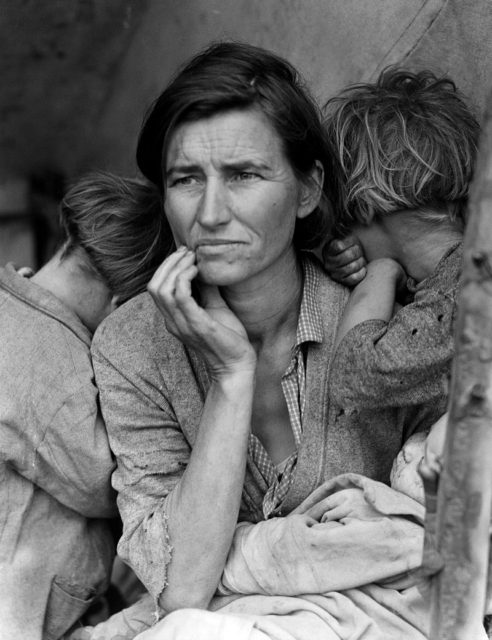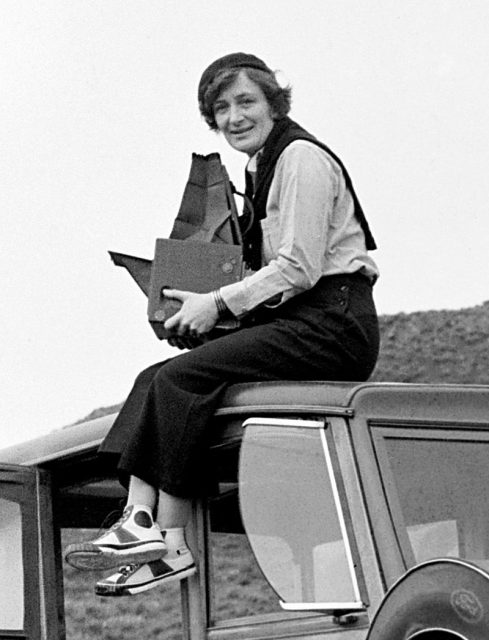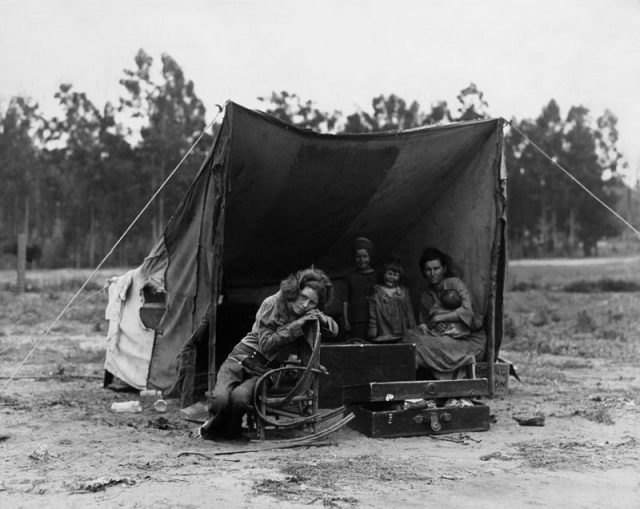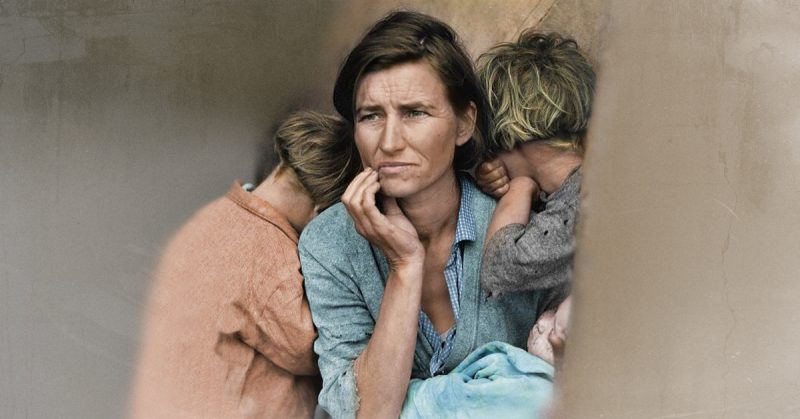A worried mother props her chin on her hand, her brow furrowed, her gaze distant. Two little girls bury their faces in her neck; in her lap, an infant sleeps.
All are dirty, their clothes tattered and frayed.
The black-and-white photograph shot in 1936 in Nipomo, California, which came to be known as “Migrant Mother,” is one of the most classic images of the Great Depression. It brought the photographer fame, and ultimately a bit of fortune, but for decades no one knew the identity of the mother and her children.

Photographer Dorothea Lange, 40 years old at the time, was heading home to San Francisco after a six weeks-long project taking pictures of migrant workers for the Resettlement Administration, which would later become the Farm Security Administration. She had only recently decided to turn her lens from wealthy San Francisco socialites to people in trouble living in the gritty streets below her studio windows.
In 1933, her very first photograph chronicling the Depression, “White Angel Breadline,” became another of the era’s most famous. (In 2005, “White Angel Breadline” sold for $822,400 at a Sotheby’s auction, according to NPR, at the time the highest price paid for a twentieth-century photograph.)

Lange, who counted among her friends other famous photographers of the era such as Ansel Adams, was among a group of photographers hired by the government to document conditions of the Dust Bowl and Great Depression to help raise awareness and build public support of government programs like the New Deal.
Lange was heading home when she saw a crude hand-lettered sign in Nipomo, California, that read: Pea Picker’s Camp. Tired, she drove past it, but her inner artistic sensibility kicked in and turned her back to discover the subject that would become her iconic Migrant Mother.
“I was following instinct, not reason,” Lange recalled in 1960 in Popular Photography. “I saw and approached the hungry desperate mother, as if drawn to her like a magnet. I do not remember how I explained my presence or my camera to her, but I do remember she asked no questions. … I did not ask her name or history.”

More than 2,500 field hands had descended on the camp, but there was nothing to pick, as freezing rain had destroyed the pea crop. Lange assumed this woman and her kids were among the idle pickers.
“She told me her age, that she was 32,” Lange said. “She said that they had been living on frozen vegetables from the surrounding fields and birds that the children killed. There she sat in that lean-to tent with her children huddled around her and seemed to know that my pictures might help her, and so she helped me. There was a sort of equality about it.”
Lange took six pictures of the mother and her children, made prints, and sold them to the San Francisco News for $150, which ran the photos to accompany a story about migrant workers starving in the pea fields. The photos resulted in an emergency delivery of 20,000 pounds of food to the stranded workers.

More than 40 years later a reporter for the Modesto (California) Bee managed to track down the true identity behind the “Migrant Mother.”
Florence Leona Christie was born in 1903, a Cherokee, in what today is Oklahoma. Married at 17, she migrated with her rapidly expanding family to California in the early 1930s and was pregnant with her sixth child when her husband died of tuberculosis. Florence began working in the fields to support her children, had another child, and met and married another man, Jim Hill, with whom she’d ultimately have another three children.
![Photograph shows Florence [Owens] Thompson with two of her children as part of the “Migrant Mother” series.](https://www.thevintagenews.com/wp-content/uploads/sites/65/2018/03/migrant_mother_1936_3-480x640.jpg)
In March of 1936, she, Jim Hill, and their seven children were on Highway 101 en route from beet picking to lettuce fields when their car broke down near the pea-picking camp. The conditions at the camp shocked them. Jim Hill and two of the boys went into town to see about getting their car repaired; Florence set up a makeshift tent with the baby girls to await their return. That’s when the photographer drove up and asked if she could take their pictures. The session was over in 10 minutes. The photographer left; the family moved on.
![Photograph shows Florence [Owens] Thompson with two of her children as part of the “Migrant Mother” series.](https://www.thevintagenews.com/wp-content/uploads/sites/65/2018/03/dorothea_lange_migrant_mother_alternative_nipomo_california_1936-640x640.jpg)
Migrant Mother made Lange’s reputation as a documentary photographer. She received a Guggenheim Fellowship in 1941. She died of cancer in 1965.
In 1998, the U.S. Postal Service used “Migrant Mother” in the Celebrate the Century series on a 32-cent stamp titled “America Survives the Depression.”
The photograph was a source of embarrassment and resentment to Florence’s 10 children, who felt like she never received any financial gain from its popularity. However, in 1983, when their mother was suffering from the health consequences of cancer and a stroke, they were able to solicit donations of $35,000 to help pay for the medical bills of the famous Great Depression Mother.
died on September 16, 1963. Her gravestone reads “Migrant Mother — A Legend of the Strength of American Motherhood.”
